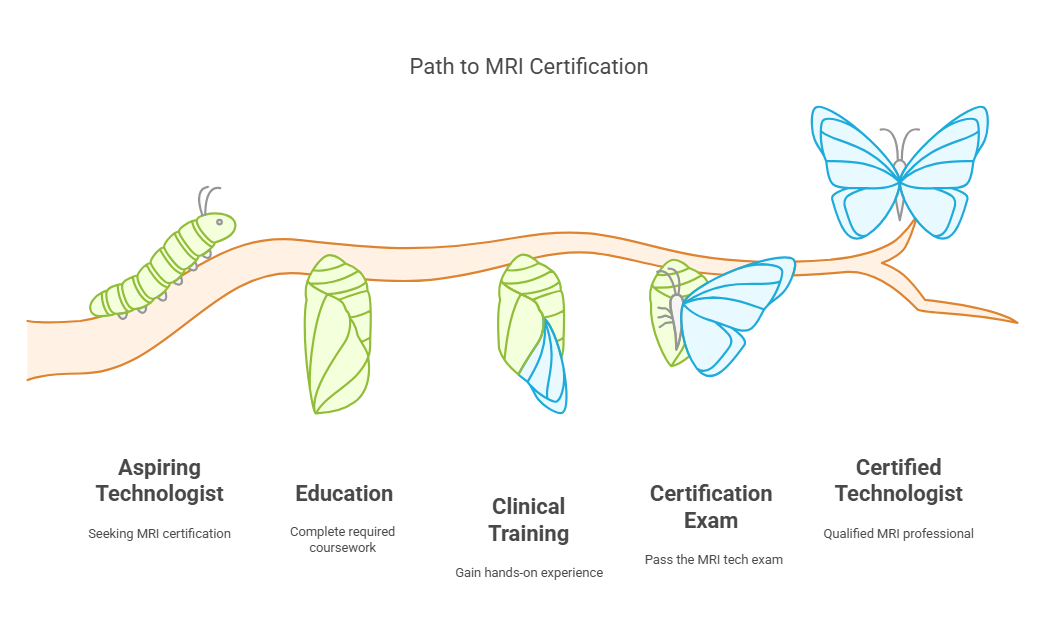how to get a mri tech certification
how to get a mri tech certification In the healthcare industry, MRI technologists are essential professionals who operate magnetic resonance imaging (MRI) machines to capture detailed images of the inside of the body. Becoming an MRI tech requires specialized training and certification, which can open doors to rewarding career opportunities in medical imaging. This guide will walk you through the process of obtaining MRI tech certification, offering insight into the requirements, training programs, and exams.

What Is an MRI Tech?
An MRI technologist, also known as an MRI technician, is responsible for operating MRI machines to help doctors diagnose and treat medical conditions. MRI techs play a vital role in capturing high-quality images of internal body structures, which are then interpreted by physicians to understand conditions like tumors, joint injuries, and neurological disorders.
Steps to Get MRI Tech Certification
Step 1: Obtain a High School Diploma or GED
Before pursuing an MRI tech certification, you need to complete your high school education. A diploma or GED is required to enroll in most MRI programs. Courses in math, science, and anatomy will be helpful, as they lay the foundation for the technical and medical knowledge required in the field.
Step 2: Earn an Associate’s Degree or Complete a Post-Secondary Program
While a bachelor’s degree is not required, an associate’s degree in radiologic technology or a related field is typically necessary to pursue MRI tech certification. Many MRI programs are offered through accredited schools or community colleges. These programs usually last between 18 months to two years and include both classroom learning and hands-on clinical experience. The coursework typically covers human anatomy, patient care, MRI safety, and medical terminology.
Some MRI tech programs are specifically designed for radiologic technologists who want to specialize in MRI technology. These programs are shorter and often take one year to complete.
Step 3: Gain Clinical Experience
To become an MRI tech, you will need hands-on experience in a clinical setting. Clinical training is a vital component of MRI programs, where you will work under the supervision of experienced MRI technologists. This real-world experience helps you learn how to operate MRI machines, position patients, ensure safety protocols are followed, and manage various situations that may arise during MRI procedures.
Step 4: Pass the Certification Exam
Once you have completed your educational and clinical training, the next step is to pass a certification exam. The American Registry of Radiologic Technologists (ARRT) offers a certification exam for MRI techs. This exam tests your knowledge in areas such as patient care, MRI physics, safety, and imaging procedures. The ARRT exam consists of multiple-choice questions and may include clinical simulation exercises.
To be eligible to sit for the exam, you must meet certain requirements, including completing an accredited MRI program and demonstrating clinical experience. In addition to passing the exam, you must adhere to ARRT’s code of ethics and meet continuing education requirements to maintain your certification.
Step 5: Obtain State Licensure (If Required)
Some states require MRI technologists to obtain a state license to practice. Each state has different licensing requirements, so it’s essential to research your state’s regulations to determine if this is necessary. State licensure typically involves passing the ARRT exam and submitting proof of education and clinical experience.
Step 6: Consider Specializations and Continuing Education
While MRI tech certification opens many doors, you can further specialize in different areas of MRI, such as pediatric MRI or cardiovascular imaging. Continuing education is also crucial to stay updated with the latest advancements in MRI technology and to maintain your certification.
Why Is MRI Tech Certification Important?
Certification in MRI technology is essential for several reasons:
- Credibility: Certification demonstrates that you have the necessary skills and knowledge to perform MRI procedures safely and effectively.
- Job Opportunities: Many employers prefer or require certification for MRI technologists, making it easier to find a job.
- Advancement: Certification can open doors to advanced roles and higher-paying positions within the healthcare industry.
- Patient Safety: Certification ensures that MRI techs are trained to follow strict safety protocols, which is vital for both patient and technician safety during MRI scans.
Conclusion
Becoming an MRI tech is a fulfilling career path that offers excellent job prospects, with the added benefit of working in a high-demand healthcare field. By following the steps outlined above—obtaining the necessary education, gaining clinical experience, passing the certification exam, and potentially acquiring state licensure—you’ll be well on your way to achieving your goal of becoming a certified MRI technologist.
Meta Description: Learn how to become an MRI technologist by earning your MRI tech certification. Discover the necessary education, training, exams, and tips for success in this rewarding career.
FAQs:
- How long does it take to get MRI tech certification? Typically, it takes around two years to earn an associate’s degree in radiologic technology, followed by clinical experience and passing the certification exam. For radiologic techs specializing in MRI, the process can take around one year.
- Is an MRI tech certification required? Yes, certification is often required for employment. Many employers and states mandate MRI tech certification to ensure that professionals meet the required standards of knowledge and competency.
- How much do MRI techs earn? MRI technologists earn a competitive salary, which can vary depending on location, experience, and education. On average, MRI techs earn around $70,000 annually.
- Can I get certified in MRI without being a radiologic technologist? It’s possible but uncommon. Most MRI tech programs require you to have a background in radiologic technology or a related field before specializing in MRI.
- What are the continuing education requirements for MRI techs? To maintain certification, MRI technologists must complete continuing education credits as part of the ARRT’s renewal process. This ensures that you stay up-to-date with the latest advancements in MRI technology.
